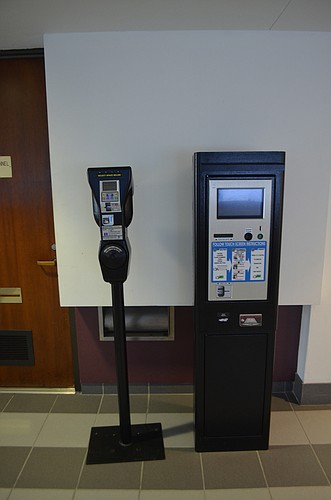- April 24, 2024
-
-
Loading

Loading

Over the next four years, taxpayers could pay more than $2 million to subsidize the city’s parking operations.
At Monday’s City Commission meeting, staff forecasted a growing parking deficit if officials could not devise a strategy for generating more revenue. Already, staff said, the city has given more than $3 million in general fund cash to the parking division since 2011.
Parking Manager Mark Lyons was speaking at the meeting to ask a question: Is the commission OK with a perpetual parking subsidy, or would it be open to an expanded paid parking system?
And yes: That may include the return of parking meters to downtown Sarasota.
It’s a familiar conversation for city leaders. In the past two years, the commission has held multiple discussions about the possibility of implementing on-street paid parking downtown. In 2016, the board approved a strategy that recommended downtown meters. Following a 2017 election, however, the board reversed its position.
Lyons said on-street paid parking wouldn’t just be a revenue-generating strategy. He said free parking discourages turnover in valuable spaces on Main Street. He believes meters would make it easier to park downtown while still providing free parking opportunities in lower-demand areas.
But paid parking remains controversial in Sarasota. The city removed meters from downtown in 2012 in response to merchant opposition. A 2016 survey of more than 130 Sarasota Downtown Merchants Association members showed 84% opposition to the prospect of installing meters again.
As a result, the commission is divided between those who believe the city must take steps to address the parking deficit and those who fear the effects of meters downtown. After discussing the topic Monday, the board took no action, instead continuing the item.
Mayor Liz Alpert and Commissioner Willie Shaw were most open to the prospect of implementing on-street paid parking on segments of Main Street and Palm Avenue, as the city planned in 2016.
Commissioners Shelli Freeland Eddie and Hagen Brody were the strongest opponents of downtown meters. Both commissioners expressed concern about business suffering, particularly given the recent effects of red tide on economic activity in the city.
Vice Mayor Jen Ahearn-Koch said the city was in a difficult position, and she felt there was not enough information available at Monday’s meeting to make a decision on how to proceed. As a result, the board directed staff to come back in the near future with additional documentation about paid parking options.
During Monday’s meeting, Lyons disclosed that parking meters alone are likely not enough to overcome the city’s parking deficit. In 2018-19, the city budgeted more than $2.3 million in parking expenses. That includes $1.1 million toward personnel and $1.2 million in operating and capital costs.
Lyons said operating and maintaining the parking garages was the primary driver of the deficit. The city estimates it will generate about $250,000 in paid parking revenue this fiscal year. Although the city charges to park in its garages, the first three hours are free in the State Street and Palm Avenue garages. In total, about 83% of garage users are parking for free.
The city estimates charging to park on Main Street and Palm Avenue would generate $478,000 in additional revenue annually. Lyons presented other revenue-generating options: Installing $1 per hour pay stations at surface lots would generate $72,600 per year, while reducing the free time in the garages to two hours would generate $49,814 per year.
Lyons said there were signs visitors to downtown Sarasota were open to the prospect of paying for parking. In addition to the fees at the garages, there are eight private lots that charge for parking. Lyons said those lots charge $3 to $5 per hour in prime areas, and his discussions with the private operators indicate the businesses are doing well.
Freeland Eddie suggested that, because the parking garages are the biggest expense, the city should be charging more to park in the garages. That runs contrary to the strategy Lyons outlined in the 2016 parking plan, which recommends using the garages as an alternative to the more desirable — but more expensive — on-street spaces with meters.
Even after Monday’s meeting, it’s unclear what strategy the city will pursue for managing its parking budget. That’s a point of concern for Alpert, who stressed that the commission needed to take some action given the size of the looming deficits. Even if it means committing to subsidizing parking long term, she asked the commission to move quickly toward a clearly defined parking plan.
“That deficit is not going to go away, so we have to look at fiscally responsible ways of addressing it,” Alpert said.